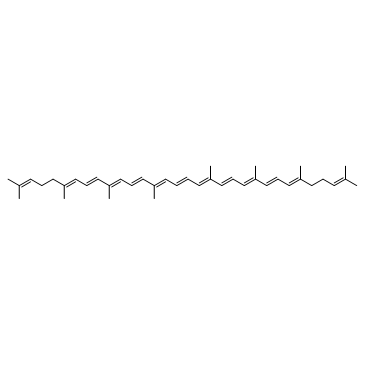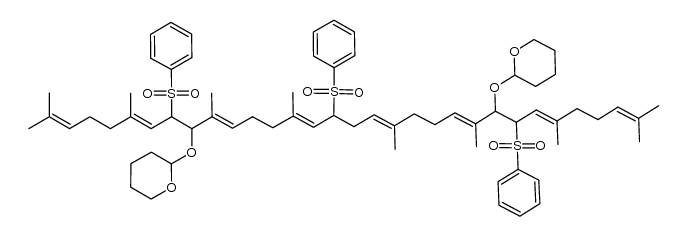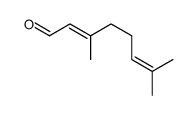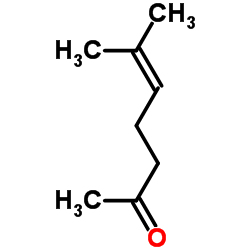502-65-8
| 中文名 | 番茄红素 |
|---|---|
| 英文名 | lycopene |
| 中文别名 |
西红柿红素
茄红素 |
| 英文别名 |
lycopen
LYCOSOURCE y,y-Carotene Lycopene,Redivivo MFCD00017350 ψ,ψ-Carotene LYCOVIT Lycopin E 160d Lycopene all-trans- Lycopene EINECS 207-949-1 (all-E)-2,6,10,14,19,23,27,31-Octamethyl-2,6,8,10,12,14,16,18,20,22,24,26,30-dotriacontatridecaene (all-trans)-Lycopene y-Carotene (6E,8E,10E,12E,14E,16E,18E,20E,22E,24E,26E)-2,6,10,14,19,23,27,31-Octamethyl-2,6,8,10,12,14,16,18,20,22,24,26,30-dotriacontatridecaene (6E,8E,10E,12E,14E,16E,18E,20E,22E,24E,26E)-2,6,10,14,19,23,27,31-Octaméthyl-2,6,8,10,12,14,16,18,20,22,24,26,30-dotriacontatridécaène all-trans-Lyc (6E,8E,10E,12E,14E,16E,18E,20E,22E,24E,26E)-2,6,10,14,19,23,27,31-Octamethyl-2,6,8,10,12,14,16,18,20,22,24,26,30-dotriacontatridecaen 4,4-CAROTENE |
| 描述 | Lycopene是番茄,番茄产品和其他红色水果和蔬菜中天然存在的类胡萝卜素; 具有抗氧化作用。 |
|---|---|
| 相关类别 | |
| 体外研究 | 由于人类无法从头合成番茄红素,因此必须从饮食中充分摄取番茄红素以从其健康促进效果中受益。番茄红素在1.25μM的生理相关浓度下显着抑制前列腺癌和乳腺癌细胞生长,并且还导致细胞中κB磷酸化抑制剂减少30-40%[1]。西红柿中一种主要类胡萝卜素的番茄红素的摄入量增加,作为全反式异构体消耗减少酒精诱导的2E1细胞凋亡并降低前列腺癌,肺癌和消化道癌症的风险。番茄红素通过作为单线态分子氧和过氧自由基清除剂起到防光氧化过程的作用,并且可以与其他抗氧化剂协同作用[2]。作为类胡萝卜素的番茄红素可以以三种不同的机制与活性氧物质(ROS)的类型反应:I)通过电子转移,II)通过氢原子转移或III)通过加合物形成。番茄红素能够主要通过物理猝灭使单线态氧失活[3]。番茄红素通过抑制PKC途径引起的NADPH氧化酶降低SK-Hep-1细胞中的ROS产生[5]。 |
| 体内研究 | 番茄红素是人血浆中最主要的类胡萝卜素,半衰期约为2-3天[2]。番茄红素或加工番茄可能导致血管壁内膜中层厚度减少[3]。番茄红素对大鼠肾上腺皮质中ATZ诱导的毒性具有保护作用。这些影响可能归因于番茄红素的抗氧化特性及其激活Nrf2/HO-1途径的能力[4]。番茄红素可改善肝毒性,起抗氧化剂作用,降低GSSG,调节tGSH和CAT水平,减少氧化损伤[5]。 |
| 细胞实验 | 用(0,0.5,1.25,2.5和5μM)番茄红素处理PC3细胞和MDA-MB-231细胞48小时。使用比色MTS测定方法测量细胞存活/生长。向每个孔中加入MTS-PMS复合物(20μL)。活细胞的催化活性导致甲dye染料产生,然后量化。将细胞与染料一起孵育1小时,然后在分光光度计上读取492nm处的吸光度[1]。 |
| 动物实验 | 大鼠:番茄红素溶解在玉米油中。将35只成年雄性白化病大鼠随机分成5组:未处理对照组,媒介物对照组(每天接受0.5毫升玉米油),番茄红素(10毫克/千克体重/天),ATZ(溶于0.5毫升玉米油300毫克/千克) bw /天)和ATZ +番茄红素。所有治疗均通过口服强饲法治疗4周[4]。 |
| 参考文献 |
| 密度 | 0.9±0.1 g/cm3 |
|---|---|
| 沸点 | 660.9±30.0 °C at 760 mmHg |
| 熔点 | 172-173°C |
| 分子式 | C40H56 |
| 分子量 | 536.873 |
| 闪点 | 350.7±19.4 °C |
| 精确质量 | 536.438232 |
| LogP | 15.19 |
| 外观性状 | 暗红色细粉末或油状 |
| 蒸汽压 | 0.0±1.0 mmHg at 25°C |
| 折射率 | 1.531 |
| 储存条件 | 塑料袋装,外用纸箱包装,密封遮光贮存于阴凉、干燥处。避免吸潮。不得与有害有毒物质混存共放 |
| 稳定性 | 按规格使用和贮存,不会发生分解,避免与氧化物接触 |
| 分子结构 | 1、 摩尔折射率:186.85 2、 摩尔体积(m3/mol):604.2 3、 等张比容(90.2K):1426.7 4、 表面张力(dyne/cm):31.0 5、 极化率(10 -24cm 3):74.07 |
| 计算化学 | 1、 疏水参数计算参考值(XlogP):15.6 2、 氢键供体数量:0 3、 氢键受体数量:0 4、 可旋转化学键数量:16 5、 互变异构体数量: 6、 拓扑分子极性表面积(TPSA):0 7、 重原子数量:40 8、 表面电荷:0 9、 复杂度:1050 10、 同位素原子数量:0 11、 确定原子立构中心数量:0 12、 不确定原子立构中心数量:0 13、 确定化学键立构中心数量:11 14、 不确定化学键立构中心数量:0 15、 共价键单元数量:1 |
| 更多 | 1. 性状:紫红色或暗红色晶体粉末 2. 密度( g/ m
3,25/4 ℃ ):未确定
3. 相对蒸汽密度(g/cm3,空气=1):未确定 4. 熔点(ºC):174 5. 沸点(ºC,常压):未确定 6. 沸点(ºC,5.2kPa):未确定 7. 折射率:未确定 8. 闪点(ºF):未确定 9. 比旋光度(º):未确定 10. 自燃点或引燃温度(ºC):未确定 11. 蒸气压(kPa,25ºC):未确定 12. 饱和蒸气压(kPa,60ºC):未确定 13. 燃烧热(KJ/mol):未确定 14. 临界温度(ºC):未确定 15. 临界压力(KPa):未确定 16. 油水(辛醇/水)分配系数的对数值:未确定 17. 爆炸上限(%,V/V):未确定 18. 爆炸下限(%,V/V):未确定 19. 溶解性:不溶于水、甘油、丙二醇、丙酮、酸和碱溶液,可溶于二硫化碳、苯、氯仿、环己烷及植物油,溶于油脂后呈黄至黄橙色。 |
|
SECTION 1: Identification of the substance/mixture and of the company/undertaking Product identifiers Product name: Lycopene REACH No.: A registration number is not available for this substance as the substance or its uses are exempted from registration, the annual tonnage does not require a registration or the registration is envisaged for a later registration deadline.
CAS-No.: 502-65-8 Relevant identified uses of the substance or mixture and uses advised against Identified uses: Laboratory chemicals, Manufacture of substances SECTION 2: Hazards identification Classification of the substance or mixture Not a hazardous substance or mixture according to Regulation (EC) No 1272/2008 Not a hazardous substance or mixture according to EC-directives 67/548/EEC or 1999/45/EC. Label elements The product does not need to be labelled in accordance with EC directives or respective national laws. Other hazards - none SECTION 3: Composition/information on ingredients Substances : ψ,ψ-Carotene Synonyms 2,6,10,14,19,23,27,31-Octamethyl-dotriaconta- 2,6,8,10,12,14,16,18,20,22,24,26,30-tridecaene Formula: C40H56 Molecular Weight: 536,87 g/mol CAS-No.: 502-65-8 EC-No.: 207-949-1 No components need to be disclosed according to the applicable regulations. SECTION 4: First aid measures Description of first aid measures If inhaled If breathed in, move person into fresh air. If not breathing, give artificial respiration. In case of skin contact Wash off with soap and plenty of water. In case of eye contact Flush eyes with water as a precaution. If swallowed Never give anything by mouth to an unconscious person. Rinse mouth with water. Most important symptoms and effects, both acute and delayed The most important known symptoms and effects are described in the labelling (see section 2.2) and/or in section 11 Indication of any immediate medical attention and special treatment needed no data available SECTION 5: Firefighting measures Extinguishing media Suitable extinguishing media Use water spray, alcohol-resistant foam, dry chemical or carbon dioxide. Special hazards arising from the substance or mixture Carbon oxides Advice for firefighters Wear self contained breathing apparatus for fire fighting if necessary. Further information no data available SECTION 6: Accidental release measures Personal precautions, protective equipment and emergency procedures Avoid dust formation. Avoid breathing vapours, mist or gas. For personal protection see section 8. Environmental precautions Do not let product enter drains. Methods and materials for containment and cleaning up Sweep up and shovel. Keep in suitable, closed containers for disposal. Reference to other sections For disposal see section 13. SECTION 7: Handling and storage Precautions for safe handling Provide appropriate exhaust ventilation at places where dust is formed.Normal measures for preventive fire protection. For precautions see section 2.2. Conditions for safe storage, including any incompatibilities Store in cool place. Keep container tightly closed in a dry and well-ventilated place. Recommended storage temperature: -70 °C Specific end use(s) A part from the uses mentioned in section 1.2 no other specific uses are stipulated SECTION 8: Exposure controls/personal protection Control parameters Components with workplace control parameters Exposure controls Appropriate engineering controls General industrial hygiene practice. Personal protective equipment Eye/face protection Use equipment for eye protection tested and approved under appropriate government standards such as NIOSH (US) or EN 166(EU). Skin protection Handle with gloves. Gloves must be inspected prior to use. Use proper glove removal technique (without touching glove's outer surface) to avoid skin contact with this product. Dispose of contaminated gloves after use in accordance with applicable laws and good laboratory practices. Wash and dry hands. The selected protective gloves have to satisfy the specifications of EU Directive 89/686/EEC and the standard EN 374 derived from it. Body Protection Choose body protection in relation to its type, to the concentration and amount of dangerous substances, and to the specific work-place., The type of protective equipment must be selected according to the concentration and amount of the dangerous substance at the specific workplace. Respiratory protection Respiratory protection is not required. Where protection from nuisance levels of dusts are desired, use type N95 (US) or type P1 (EN 143) dust masks. Use respirators and components tested and approved under appropriate government standards such as NIOSH (US) or CEN (EU). Control of environmental exposure Do not let product enter drains. SECTION 9: Physical and chemical properties Information on basic physical and chemical properties a) AppearanceForm: solid b) Odourno data available c) Odour Thresholdno data available d) pHno data available e) Melting point/freezingno data available point f) Initial boiling point and no data available boiling range g) Flash pointno data available h) Evapouration rateno data available i) Flammability (solid, gas) no data available j) Upper/lowerno data available flammability or explosive limits k) Vapour pressureno data available l) Vapour densityno data available m) Relative densityno data available n) Water solubilityno data available o) Partition coefficient: n- no data available octanol/water p) Auto-ignitionno data available temperature q) Decompositionno data available temperature r) Viscosityno data available s) Explosive propertiesno data available t) Oxidizing propertiesno data available Other safety information no data available SECTION 10: Stability and reactivity Reactivity no data available Chemical stability Stable under recommended storage conditions. Possibility of hazardous reactions no data available Conditions to avoid no data available Incompatible materials Strong oxidizing agents Hazardous decomposition products Other decomposition products - no data available In the event of fire: see section 5 SECTION 11: Toxicological information Information on toxicological effects Acute toxicity no data available Skin corrosion/irritation no data available Serious eye damage/eye irritation no data available Respiratory or skin sensitisation no data available Germ cell mutagenicity no data available Carcinogenicity IARC:No component of this product present at levels greater than or equal to 0.1% is identified as probable, possible or confirmed human carcinogen by IARC. Reproductive toxicity no data available Specific target organ toxicity - single exposure no data available Specific target organ toxicity - repeated exposure no data available Aspiration hazard no data available Additional Information RTECS: Not available To the best of our knowledge, the chemical, physical, and toxicological properties have not been thoroughly investigated. SECTION 12: Ecological information Toxicity no data available Persistence and degradability no data available Bioaccumulative potential no data available Mobility in soil no data available Results of PBT and vPvB assessment PBT/vPvB assessment not available as chemical safety assessment not required/not conducted Other adverse effects no data available SECTION 13: Disposal considerations Waste treatment methods Product Offer surplus and non-recyclable solutions to a licensed disposal company. Contaminated packaging Dispose of as unused product. SECTION 14: Transport information UN number ADR/RID: -IMDG: -IATA: - UN proper shipping name ADR/RID: Not dangerous goods IMDG: Not dangerous goods IATA:Not dangerous goods Transport hazard class(es) ADR/RID: -IMDG: -IATA: - Packaging group ADR/RID: -IMDG: -IATA: - Environmental hazards ADR/RID: noIMDG Marine pollutant: noIATA: no Special precautions for user no data available SECTION 15 - REGULATORY INFORMATION N/A SECTION 16 - ADDITIONAL INFORMATION N/A |
|
生态学数据: 通常对水是不危害的,若无政府许可,勿将材料排入周围环境。
|
| 个人防护装备 | Eyeshields;Gloves;type N95 (US);type P1 (EN143) respirator filter |
|---|---|
| 危害码 (欧洲) | Xi: Irritant; |
| 风险声明 (欧洲) | R36/37/38 |
| 安全声明 (欧洲) | 26-36/37/39 |
| 危险品运输编码 | NONH for all modes of transport |
| WGK德国 | 3 |
| 海关编码 | 3203001990 |
| 上游产品 10 | |
|---|---|
| 下游产品 10 | |
| 海关编码 | 3203001990 |
|---|





















